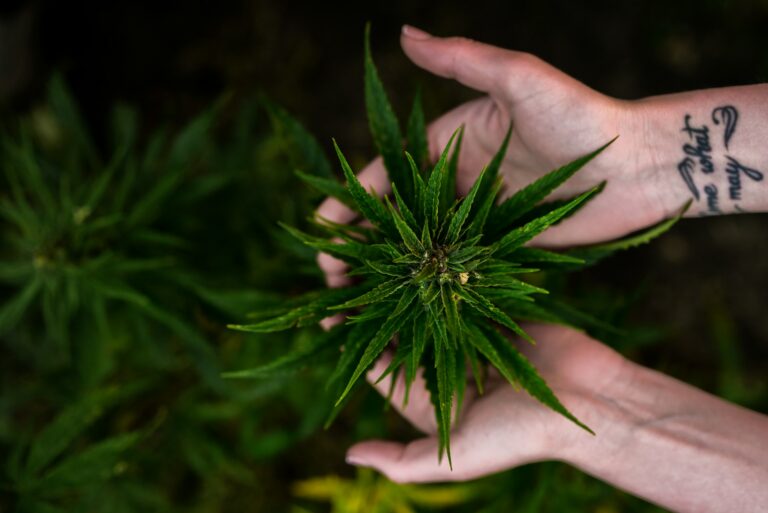In 2012, Colorado and Washington made history when they became the first states in the country to legalize the use and sale of marijuana for recreational purposes. Around 22 other states followed suit over the next decade, from Maine in the upper reaches of the northeast to Arizona in the southwest and a smattering of midwest states, including Illinois, Montana, and Missouri.
Now, recreational marijuana is an industry with an estimated market value of $13.2 billion and dozens of products, from classic flower to digestible edibles, plus an array of tinctures, topicals, and specific strains. But with so many options available for enjoying weed, it can be difficult for novice smokers and experienced imbibers to know which products produce the effects you’re looking for. When it comes to some of the most popular options, like smoking or ingesting edibles, what gets you the most high?
The Science Behind Marijuana
To fully understand what gets you the most high between smoking marijuana and consuming edibles, it’s helpful to have some insight into how weed creates the inebriating effects known as a “high.” You may already be aware that it has to do with the interaction between your brain and THC, the active chemical in marijuana, but exactly how does weed work scientifically?
Tetrahydrocannabinol, or THC, is a psychoactive cannabinoid found in the cannabis or marijuana plant. It’s one of approximately 113 cannabinoids that the plant produces, not all of which possess psychoactive properties. Among the most well-known example of these nonpsychoactive cannabinoids is cannabidiol (CBD), which isn’t believed to cause intoxication, although it is inconclusively associated with a number of other effects, including stimulating appetite, fighting inflammation, and relieving bodily pain.
Despite the discrepancies in their effect on the human body, THC and CBD are very similar chemical compounds. They both act on the body thanks to an interplay with natural cannabinoids that the human brain produces. However, one important distinction is that, unlike CBD, THC bears a close structural similarity to a type of endogenous cannabinoid known as anandamide that the body uses to carry messages throughout the nervous system. These cells regulate a range of physiological functions, including:
- Concentration
- Coordination
- Memory
- Movement
- Sensory perception
- Thinking
- Time perception
The structural similarity is behind the “high” you experience when you ingest THC. Symptoms of a high can vary from person to person and can depend greatly on a range of other factors specific to the marijuana source, but they typically include feelings of euphoria, relaxation, creativity, and hunger. In other cases, a marijuana high may manifest as anxiety, panic, and paranoia and cause your heart to race and your blood pressure to spike. But whatever specific symptoms a given person experiences, they’re caused by THC molecules latching onto natural cannabinoid receptors in your brain and disrupting your endocannabinoid system, a major constituent of your nervous system.
Popular Marijuana Products and How They Affect the Body
Among the most popular marijuana products on the market are edibles, which can include a vast array of food products, from candy like gummies or lollipops to baked goods, and marijuana flower, which must be smoked to have an effect. A range of factors come into play that determines the extent to which different types of THC products get you high. But as a general rule, edibles are believed to act on the body more powerfully, while smoking marijuana acts with more immediacy.
Other contributing factors include:
- The specific marijuana strain
- The cannabis potency
- The amount of marijuana in an edible
- The smoking method
Marijuana Strains and Potency
There are over 700 strains of marijuana, each with its own potency level. These strains are generally classified as either sativa, indica, or a hybrid. Sativa and sativa-dominant strains are commonly associated with cerebral effects like lowered anxiety levels, increased energy, and spikes in creativity, while indica and indica-dominant strains are known for their fatigue-inducing effects. For some people, indica strains also offer powerful nausea and pain relief.
Contemporary marijuana strains have an average potency of about 15%, which is more than 10 times greater than the potency of marijuana from 30 or 40 years ago. The potency of a marijuana product is further influenced by the level of THC it contains. Products like edibles are more powerful than the smokable plant because they contain marijuana extracts that have elevated levels of THC, sometimes reaching as high as 50% and 90%.
Despite the many unknowns, the secret to experiencing an enjoyable and safe high is understanding your personal tolerance level. A person’s tolerance for THC is primarily influenced by:
- Smoking frequency
- Your metabolic rate
It can take some experimenting with lower and higher potencies to find the strain that’s right for you. Starting low and building up your tolerance for THC, as well as moderating your consumption, are other ways you can mitigate your chances of having an adverse reaction to marijuana and get the most out of your experience.
Smoking Method
If you smoke marijuana as opposed to ingesting edibles, your high can be affected by the method you choose. The most common methods are:
- Joints
- Blunts
- Using a pipe or a bowl
- Using a bong
The common belief is that smoking from a bong contributes a much more intense high than other methods, but some studies suggest that smoking from a bong does very little to alter the amount of THC per hit. Perhaps more influential is the ease of smoking a bong over other methods. Water bongs cool down the burning marijuana, contributing to a cleaner, smoother pull, which may enable some smokers to take longer, larger hits.
Also, studies show that people who roll and smoke joints report experiencing greater intensity highs than those who smoke blunts. These studies also revealed that joint smoking resulted in higher levels of THC in the bloodstream compared to blunts, while blunts appeared to contribute to higher traces of carbon monoxide in bone joints. However, joint and blunt smokers revealed near-equal effects with regard to the extent to which smoking elevated their heart rates.
Discover Your Perfect High
The world of recreational cannabis is exciting, eclectic, and brimming with an abundance of options for getting blazed. From flower, vapes, and concentrates to smokeless selections like edibles, tinctures, topicals, and more, modern marijuana has something to offer everyone.
That said, it can take a bit of expertise to find a high that doesn’t let you down. At DDM Cannabis, you won’t just find the most extensive inventory of recreational cannabis in the area; you’ll also find an incredibly knowledgeable team of expert budtenders who are ready to answer your questions, share their insights, and connect you with quality marijuana products that give you the perfect high at the perfect price.


